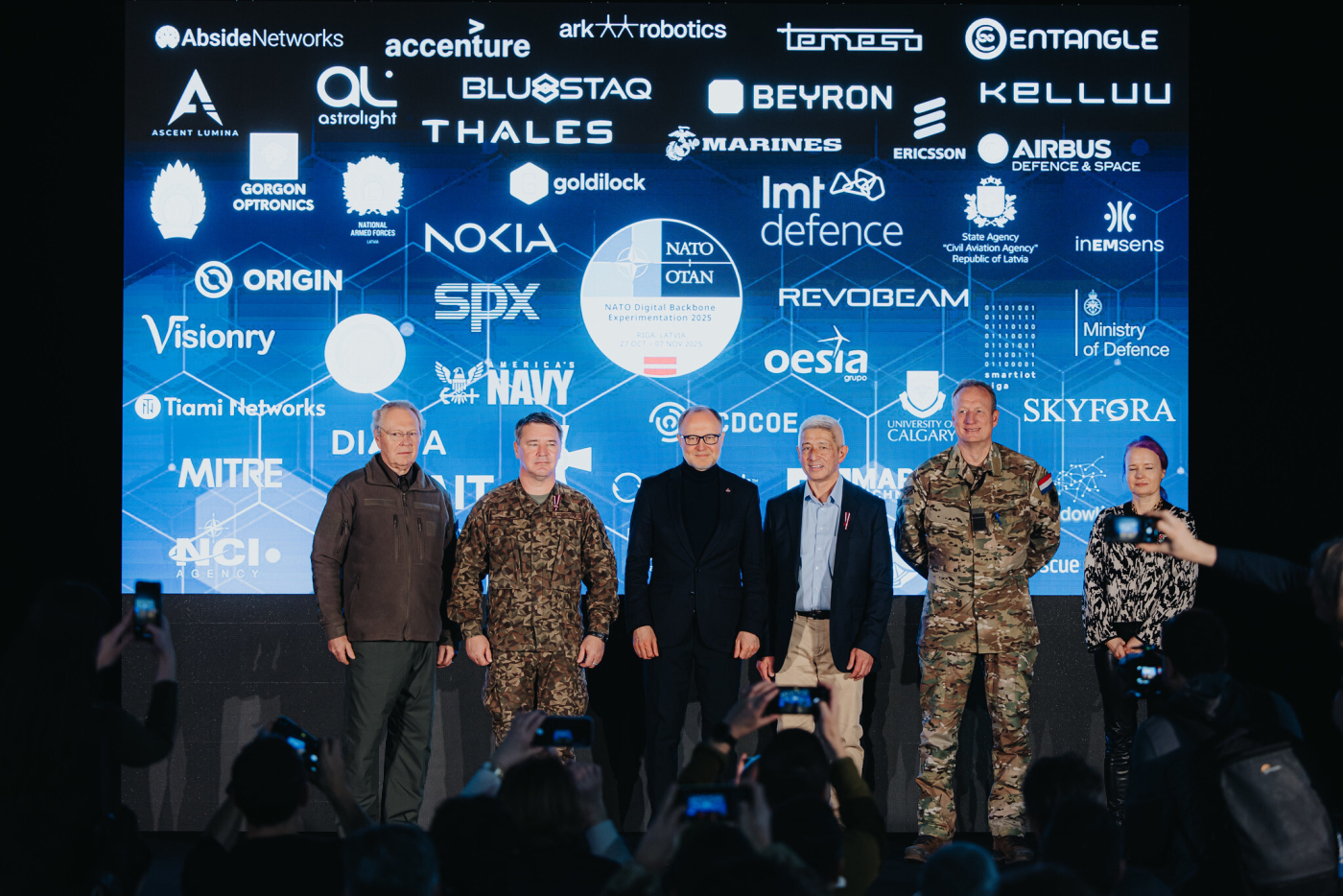NATO’s annual Digital Backbone Experimentation (DiBaX 2025) concluded on November 7 in Latvia after two weeks of field experiments that focused on how communication networks, artificial intelligence (AI), and unmanned systems can work together in complex operational environments.
DiBaX is a pioneering initiative designed to enhance interoperability and drive digital transformation across NATO forces. The experiments were held at Ādaži Military base between October 27 and November 7.
The aim of the experiments was to integrate multiple vendor technologies – including networks, unmanned systems, sensors, AI, and more – into a common architecture and test its resilience in various operational scenarios.
As noted by Major General Arnoud Stallmann of NATO ACT in his opening remarks at the VIP day, “there is a real sense of urgency at the moment”, referring to recent incursions in Poland’s and Belgium’s airspaces. “Our adversaries are innovating rapidly as well,” he reminded.
The experiment was concluded by an operational demo, which simulated a counter-unmanned
aerial system (UAS) operation with a following explosive ordnance disposal mission. The participants used technologies from companies such as Ark Robotics, Ascent Lumina, Ericsson, JET Connectivity, KELLUU, Marduk Technologies, Nokia, Origin Robotics, Rescue Dynamics, Origin, Thales, and others.
The experiment demonstrated that data from multiple international systems can be connected through 5G and satellite communication systems to ensure a common operational picture for complex and dynamic operations.
Over the past four years, LMT Defence has served as the technical integrator in NATO ACT’s Digital Backbone experiment – an initiative that brings together 5G expertise for the improvement of military innovation. Being an integrator is about more than connecting technologies. It’s about creating synergy between innovation, security, and strategic thinking. Together, we’ve demonstrated that we have the competence, the courage, and the capability to be a vital part of NATO’s digital transformation,
said President of LMT, Juris Binde.Talking about the results, Warren Low, Director of DiBaX at NATO ACT, stressed that the most important outcome of these experiments is to eventually “put this technology in the hands of soldiers, let them operate it, have experience, [and] provide feedback to industry” to help the industry innovate and develop more rapidly. The experiments also helped refine capability requirements, advance interoperability toward standardization, strengthen cooperation between companies, and build the human network needed to drive innovation.
For the fourth consecutive year, NATO DiBaX was held in Latvia. The event was organized in close cooperation between NATO’s Allied Command Transformation, the Latvian Ministry of Defence, and the National Armed Forces, with LMT serving as the experiment’s technology integrator and providing a state-of-the-art 5G test environment.
